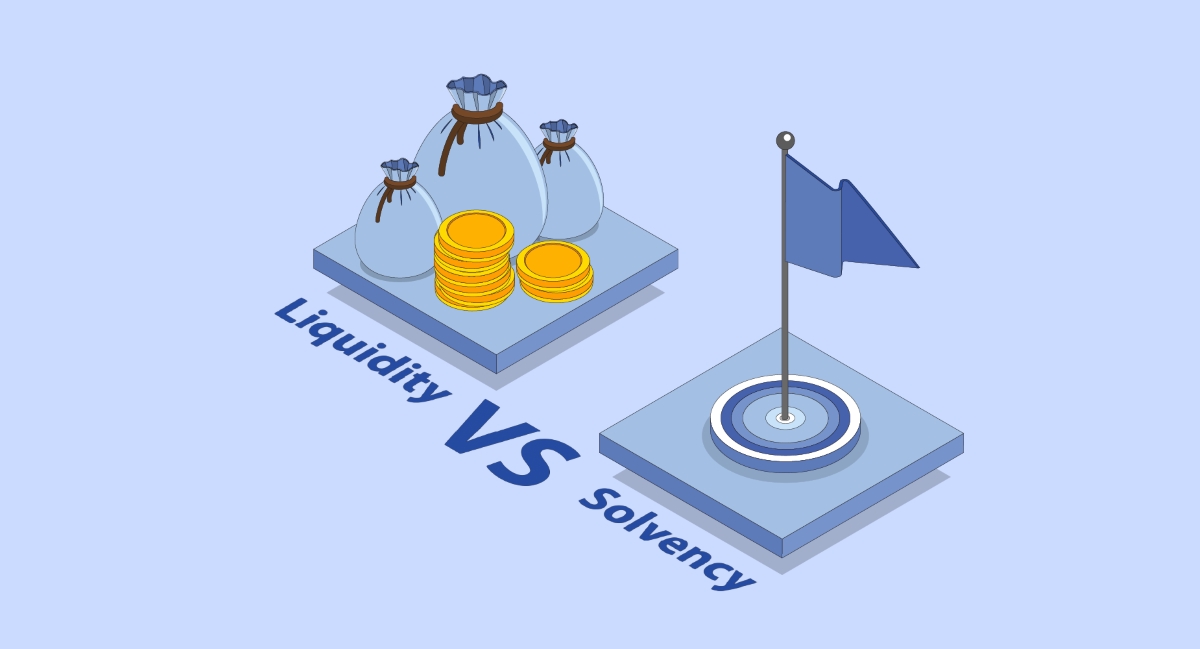Home>Finance>What Are The Key Factors Of A Good Credit Management Program?


Finance
What Are The Key Factors Of A Good Credit Management Program?
Modified: February 21, 2024
Discover the essential elements of an effective credit management program and how they contribute to sound financial practices. Enhance your finance strategies with expert guidance.
(Many of the links in this article redirect to a specific reviewed product. Your purchase of these products through affiliate links helps to generate commission for LiveWell, at no extra cost. Learn more)
Table of Contents
- Introduction
- Understanding Credit Management
- Importance of a Good Credit Management Program
- Factors to Consider in a Credit Management Program
- Clear Credit Policies and Procedures
- Effective Risk Assessment and Credit Scoring
- Efficient Credit Application and Approval Process
- Robust Credit Monitoring and Review Systems
- Timely Collections and Payment Follow-up
- Accurate and Organized Credit Reporting
- Strong Customer Communication and Relationship Management
- Continuous Training and Development of Credit Management Staff
- Benefits of Implementing a Good Credit Management Program
- Conclusion
Introduction
Managing credit effectively is a crucial aspect of financial management for individuals and businesses alike. Whether it’s securing loans, obtaining favorable interest rates, or building a solid credit history, having a good credit management program is essential. A robust credit management program ensures that credit is extended and utilized in a responsible and strategic manner.
In this article, we will explore the key factors that contribute to a good credit management program. From clear policies and procedures to efficient credit application processes, we’ll delve into the elements that make a credit management program effective and impactful.
Having a comprehensive understanding of credit management is important before we dive into its key elements. At its core, credit management involves assessing the creditworthiness of individuals or businesses, extending credit, and managing the repayment process. It encompasses various activities, such as risk assessment, credit application processing, credit monitoring, and collection efforts.
A well-structured credit management program is designed with the goal of reducing credit risk, ensuring timely payments, and maintaining positive cash flow. It takes into account factors such as credit policies, risk assessment methodologies, credit reporting systems, and customer relationships. By implementing an effective credit management program, individuals and businesses can mitigate credit risks, improve financial stability, and maintain a solid credit profile.
Now, let’s explore the key factors that contribute to a good credit management program and how they can benefit individuals and businesses alike.
Understanding Credit Management
Credit management is the process of evaluating and managing the creditworthiness of individuals or businesses, as well as the allocation and collection of credit. It involves assessing the financial health and repayment capacity of borrowers and determining the terms and conditions under which credit will be extended.
One of the primary goals of credit management is to minimize credit risk, which refers to the potential of financial loss arising from default or late payment by borrowers. A sound credit management system ensures that credit is only extended to borrowers who have a high probability of repaying their debts on time.
Risk assessment and credit scoring are crucial components of credit management. This involves analyzing various factors such as a borrower’s credit history, income stability, debt-to-income ratio, and collateral offered, if any. By evaluating these factors, credit managers can determine the creditworthiness of borrowers and make informed decisions about credit limits, interest rates, and repayment terms.
In addition to risk assessment, credit management encompasses other essential processes. Credit application and approval involve thoroughly reviewing and verifying the information provided by borrowers, ensuring that all necessary documentation is in order.
Once credit is extended, the credit monitoring and review process becomes critical. Regular monitoring allows credit managers to identify any signs of financial distress or deterioration in the borrower’s creditworthiness. This helps in taking corrective actions, such as revising credit limits or implementing stricter payment terms, to mitigate potential credit risks.
Effective credit management also includes a robust collections and payment follow-up system. Timely and persistent collections efforts are key to ensuring that outstanding debts are settled promptly and to minimizing the risk of bad debts. Clear communication channels and well-defined protocols for contacting defaulting customers are crucial in this process.
Accurate and organized credit reporting is another integral aspect of credit management. This involves maintaining comprehensive records of credit applications, repayment history, and credit limits. This information enables credit managers to assess the overall credit exposure and make informed decisions about future credit extensions.
Furthermore, fostering strong customer communication and relationship management is important in credit management. Regularly engaging with borrowers, understanding their challenges, and addressing any concerns helps in building trust and maintaining a healthy credit relationship.
Finally, continuous training and development of credit management staff is vital to ensure they possess the necessary skills and knowledge to effectively carry out their responsibilities. This includes staying updated with industry best practices, regulatory requirements, and technological advancements.
By understanding the intricacies of credit management and the various components involved, individuals and businesses can implement a well-rounded credit management program that safeguards their financial health and stability.
Importance of a Good Credit Management Program
A good credit management program is essential for individuals and businesses for several reasons.
First and foremost, it helps in minimizing credit risk. By implementing effective risk assessment methodologies and credit scoring systems, a credit management program ensures that credit is extended only to borrowers who have a high likelihood of repaying their debts. This reduces the chances of default or late payments, thereby minimizing financial losses and preserving cash flow.
A strong credit management program also plays a crucial role in maintaining a positive credit profile. By diligently monitoring credit applications, reviewing creditworthiness, and ensuring timely payments, individuals and businesses can build and maintain a good credit history. This, in turn, opens up opportunities for favorable interest rates, better loan terms, and increased access to credit in the future.
Furthermore, a good credit management program enhances financial stability. It helps individuals and businesses maintain a healthy cash flow by ensuring that outstanding debts are collected and paid promptly. This reduces the risk of bad debts and improves overall financial management.
For businesses, a well-implemented credit management program can also contribute to customer satisfaction and retention. By establishing clear credit policies, effective communication channels, and proactive collection efforts, businesses can build strong relationships with their customers. This fosters trust, reliability, and loyalty, which are instrumental in long-term business success.
In addition, a good credit management program enables businesses to effectively manage their working capital. By optimizing credit terms, setting appropriate credit limits, and monitoring payment cycles, businesses can strike a balance between extended credit and maintaining sufficient cash reserves. This facilitates efficient cash flow management and supports business growth and expansion.
Moreover, an effective credit management program promotes compliance with regulatory requirements. By ensuring that credit decisions and collection practices align with legal and industry standards, businesses can mitigate the risk of legal repercussions and maintain a positive reputation.
Overall, a good credit management program is crucial for individuals and businesses alike. It allows for responsible credit utilization, minimizes credit risk, builds a positive credit history, enhances financial stability, and fosters strong customer relationships. By implementing and maintaining a robust credit management program, individuals and businesses can navigate the complex world of credit with confidence and success.
Factors to Consider in a Credit Management Program
A successful credit management program entails several key factors that contribute to its effectiveness. Here are the essential elements to consider:
- Clear Credit Policies and Procedures: Establishing clear and well-defined credit policies is crucial for consistency and transparency. This includes guidelines for credit application, credit assessment, credit limits, and payment terms. By having documented procedures in place, credit decisions can be made efficiently and consistently.
- Effective Risk Assessment and Credit Scoring: Implementing robust risk assessment methodologies and credit scoring systems helps in evaluating the creditworthiness of borrowers. This involves analyzing factors such as credit history, financial stability, and collateral (if applicable). Effective risk assessment enables credit managers to make informed decisions about extending credit and determining appropriate terms and conditions.
- Efficient Credit Application and Approval Process: Streamlining the credit application and approval process is essential for quick and accurate decision-making. This involves collecting all necessary documentation, verifying information, and conducting appropriate due diligence. A well-structured process reduces delays and ensures that credit is extended only after a thorough evaluation.
- Robust Credit Monitoring and Review Systems: Regular monitoring of credit accounts is crucial for early detection of any signs of financial distress or deterioration in the borrower’s creditworthiness. By establishing robust credit monitoring systems, credit managers can identify potential risks and take proactive measures to mitigate them. This includes conducting periodic credit reviews, analyzing payment patterns, and reassessing credit limits as needed.
- Timely Collections and Payment Follow-up: Having effective collections processes is vital for maintaining healthy cash flow. Credit managers should establish clear protocols for following up on late payments, implementing overdue payment reminders, and initiating appropriate collections actions when necessary. Timely and persistent collections efforts contribute to minimizing bad debts and improving overall cash flow management.
- Accurate and Organized Credit Reporting: Maintaining comprehensive and up-to-date credit records is crucial for accurate reporting and analysis. This includes recording credit applications, repayment history, credit limits, and any actions taken to address late payments or defaults. Accurate credit reporting ensures that credit managers have a comprehensive view of credit exposure and can make informed decisions about future credit extensions.
- Strong Customer Communication and Relationship Management: Building and maintaining strong relationships with customers is vital for successful credit management. Clear communication channels should be established to address any concerns, provide necessary clarification, and foster a positive credit relationship. Regular engagement with customers allows for better understanding of their needs and challenges, leading to proactive credit management and improved customer satisfaction.
- Continuous Training and Development of Credit Management Staff: Investing in the continuous training and development of credit management staff is essential for effective credit management. This includes staying updated with industry best practices, regulatory changes, and technological advancements. Well-trained credit management staff are better equipped to make sound credit decisions, handle collections, and manage customer relationships.
By considering and implementing these key factors, individuals and businesses can establish a comprehensive credit management program that promotes responsible credit utilization, minimizes credit risks, and ensures financial stability.
Clear Credit Policies and Procedures
Clear credit policies and procedures are a foundational element of a robust credit management program. These policies provide guidelines and standards for extending credit, assessing creditworthiness, determining credit limits, and establishing payment terms. Having well-defined credit policies and procedures helps ensure consistency, transparency, and efficient decision-making in the credit process.
When developing credit policies, it’s important to consider factors such as the target market, industry norms, and the organization’s risk appetite. The policies should be aligned with the organization’s overall business objectives and risk management strategy.
A good credit policy outlines who is eligible to apply for credit, the criteria for credit assessment, and the documentation required. It also outlines the process for evaluating applications, including the timeframes for decision-making and the channels for communication. Clear policies enable credit managers to standardize the credit application process and maintain consistency in their risk assessment approach.
Furthermore, credit policies should define credit limits based on factors such as the customer’s creditworthiness, payment history, and financial stability. Clearly specifying credit limits helps to mitigate the risk of overextension and ensures that credit is granted in line with the organization’s risk management framework.
In addition to credit limit determination, credit policies should establish payment terms that are reasonable and aligned with industry standards. These terms may include due dates, grace periods, and methods of payment. Clear payment terms help set expectations and facilitate timely collection efforts.
Procedures should accompany the credit policies, providing step-by-step instructions on how to implement and execute the policies effectively. These procedures should outline the tasks, responsibilities, and authorities of individuals involved in the credit management process, including credit application processing, credit assessment, and credit limit setting.
Regular reviews and updates of credit policies and procedures are essential to ensure their relevancy and adaptation to changing market conditions and regulatory requirements. This helps to maintain best practices and align credit management with evolving business needs.
Clear credit policies and procedures provide several benefits to organizations. They promote consistency in credit decision-making, mitigate the risk of subjective judgments, and ensure that credit is granted based on objective criteria. This improves the organization’s ability to assess credit risk accurately and make informed credit decisions.
Moreover, clear policies and procedures promote transparency and communication with both internal stakeholders and external parties. They provide a foundation for efficient communication with customers, ensuring that they understand the organization’s credit requirements and the expectations for repayment.
Overall, clear credit policies and procedures are a crucial component of a successful credit management program. They establish a framework for consistent and transparent decision-making, enable effective risk assessment, and facilitate timely collections. By implementing clear policies and procedures, organizations can mitigate credit risk and promote responsible credit utilization within their operations.
Effective Risk Assessment and Credit Scoring
Effective risk assessment and credit scoring are critical components of a robust credit management program. They help organizations evaluate the creditworthiness of potential borrowers, determine appropriate terms and conditions, and make informed credit decisions. By implementing rigorous risk assessment methodologies and credit scoring systems, organizations can minimize credit risks and ensure responsible credit extension.
Risk assessment involves evaluating various factors to assess the likelihood of a borrower’s ability to repay their debts. This includes analyzing credit history, income stability, debt-to-income ratio, and collateral (if applicable). Effective risk assessment enables credit managers to identify potential credit risks and make informed decisions about extending credit and determining suitable credit limits.
Credit scoring is a system or model used to assign a numerical value or score to represent the creditworthiness of a borrower. It relies on historical data and statistical analysis to predict the likelihood of default or late payment. Credit scores provide an objective and quantifiable measure that assists credit managers in quickly assessing a borrower’s creditworthiness.
There are various credit scoring models available, such as FICO (Fair Isaac Corporation) scores, which are widely used in the lending industry. These models consider factors such as payment history, credit utilization, length of credit history, types of credit, and new credit applications. Each factor is weighted based on its level of importance in predicting credit risk.
Implementing an effective credit scoring system allows for consistent and objective credit decisions. It helps credit managers identify high-risk borrowers and set appropriate credit limits and interest rates. This ensures that credit is extended only to individuals or businesses with a high probability of repaying their debts.
Furthermore, technology and data analytics play a crucial role in enhancing the efficiency and accuracy of risk assessment and credit scoring. Automated systems can process large volumes of data quickly, enabling credit managers to make timely decisions. Machine learning and predictive analytics models can also help in identifying patterns and trends in creditworthiness, further improving the accuracy of credit scoring.
Regular evaluation and monitoring of credit scores and risk assessments are important to adapt to changing circumstances. As borrowers’ financial situations evolve, periodic reviews allow credit managers to reassess credit limits, adjust interest rates, or implement other risk mitigation measures.
By implementing effective risk assessment methodologies and credit scoring systems, organizations can make informed credit decisions, mitigate credit risks, and promote responsible credit utilization. These practices contribute to a solid credit management program and help to maintain financial stability and facilitate sustainable growth.
Efficient Credit Application and Approval Process
An efficient credit application and approval process is a crucial component of a successful credit management program. It involves streamlining and optimizing the steps involved in assessing creditworthiness, verifying information, and making informed credit decisions in a timely manner.
The credit application process begins with collecting comprehensive and accurate information from potential borrowers. This includes personal or business details, financial statements, credit references, and other relevant documentation. Providing clear instructions and guidelines to applicants simplifies the process and ensures that all necessary information is obtained.
Efficiency is achieved by establishing a well-defined workflow and assigning clear responsibilities to individuals involved in the credit application and approval process. This helps in minimizing delays and maintaining consistency in decision-making.
Once the application is received, it should be promptly reviewed and assessed. This involves verifying the accuracy of the information provided, such as income statements, bank statements, and credit reports. Efficient credit managers leverage technology and automated systems to expedite the verification process and ensure accuracy.
Furthermore, having well-defined credit criteria and credit policy guidelines for decision-making improves the efficiency of the approval process. This allows credit managers to quickly assess the applicant’s creditworthiness and make informed decisions based on predetermined guidelines.
Collaboration between departments involved in the credit application process is crucial in ensuring efficiency. Effective communication channels and shared access to relevant documents and information enable seamless coordination and timely decision-making.
Implementing technology solutions, such as credit management software or customer relationship management systems, can significantly enhance efficiency in the credit application and approval process. These tools enable automated workflows, centralize customer information, and provide real-time visibility into the status of credit applications. Automated systems also reduce the risk of errors and ensure that credit decisions are made with accurate and up-to-date information.
Timeliness is a key factor in an efficient credit application and approval process. By establishing service level agreements outlining the expected turnaround time for decision-making and communication, borrowers can be assured of a quick and transparent process. Keeping applicants informed about the progress of their application further enhances customer satisfaction and builds trust.
Regular monitoring and evaluation of the credit application and approval process are also crucial to identify and address bottlenecks or areas for improvement. Ongoing process improvement initiatives, such as analyzing application turnaround times and identifying any sources of delays, help optimize the overall efficiency of the credit management program.
An efficient credit application and approval process enhances customer experience, strengthens relationships, and improves overall operational efficiency. By streamlining workflows, leveraging technology, and ensuring timely decision-making, organizations can effectively manage credit applications, mitigate risks, and ultimately drive business growth.
Robust Credit Monitoring and Review Systems
A robust credit monitoring and review system is a vital component of a successful credit management program. It enables organizations to track and assess the creditworthiness of borrowers, identify potential risks, and take proactive measures to mitigate those risks. Regular monitoring and reviews ensure that credit exposures are managed effectively and in accordance with established credit policies and guidelines.
Effective credit monitoring involves the ongoing assessment of borrowers’ financial health and repayment patterns. It includes tracking payment behavior, evaluating changes in creditworthiness, and identifying signs of financial distress. Robust credit monitoring systems help credit managers identify early warning signals, allowing them to take prompt actions to minimize potential losses.
Regular reviews of credit accounts are essential to ensure the continued validity of credit limits and terms. By conducting periodic credit reviews, credit managers can assess the ongoing creditworthiness of borrowers, reassess credit limits if necessary, and identify any changes in risk exposure. These reviews help maintain an accurate assessment of credit risk and inform decision-making regarding future credit extensions.
Automation plays a significant role in enhancing the efficiency and effectiveness of credit monitoring and reviews. By leveraging credit management software or other data analytics tools, organizations can streamline the process and ensure accurate and timely analysis of credit data. Automated systems alert credit managers to potential issues, such as approaching credit limits or instances of non-compliance with payment terms.
Integrating credit monitoring systems with external sources, such as credit bureaus, can provide access to additional information for a comprehensive assessment of creditworthiness. This includes credit reports, payment histories, and information about existing credit obligations. Such integration enhances the accuracy and depth of credit monitoring and aids in making informed credit decisions.
In addition to tracking repayment behavior, effective credit monitoring systems should also capture and analyze other relevant data, such as customer interactions, collection efforts, and payment trends. This broader perspective helps credit managers evaluate the overall credit relationship and identify opportunities for improvement or potential risks.
Moreover, establishing clear protocols for actions to be taken in response to specific triggers or changes in creditworthiness enhances the effectiveness of credit monitoring. These protocols can include defined thresholds for raising credit limits, implementing stricter payment terms, or initiating collections efforts. Having predefined processes streamlines decision-making and ensures consistency in risk mitigation strategies.
Regular reporting and communication of credit monitoring results to stakeholders, such as senior management or credit committees, is critical. Clear and concise reporting highlights significant credit trends and risks, enabling informed decision-making at the strategic level.
By implementing robust credit monitoring and review systems, organizations can proactively manage credit risks, make informed decisions about credit extensions, and maintain healthy credit relationships. Through ongoing monitoring, timely reviews, and the use of technology, organizations can effectively mitigate potential losses and protect their financial stability.
Timely Collections and Payment Follow-up
Timely collections and payment follow-up are crucial aspects of a successful credit management program. The ability to collect outstanding debts promptly directly impacts a company’s cash flow and financial stability. Implementing efficient collections processes and proactive follow-up strategies can minimize bad debts and improve overall credit management.
An essential component of timely collections is setting clear payment terms and communicating them to customers upfront. Establishing due dates, grace periods, and preferred payment methods helps to set expectations and ensures that customers understand their obligations. Clear communication also includes providing invoices promptly and including all necessary payment information.
Organizations should establish a systematic and structured approach to collections. This includes monitoring payment due dates, sending timely reminders for overdue payments, and escalating the process as necessary. Having defined protocols for contacting customers at each stage of the collection process helps maintain consistency and improves the chances of successful payment recovery.
Utilizing technology, such as automated reminders and customer relationship management software, streamlines the follow-up process. Automated systems can send reminders and notifications to customers at predetermined intervals, reducing the need for manual intervention. This expedites the collections process and increases the likelihood of receiving timely payments.
It’s important to prioritize collections efforts based on the age and amount of outstanding debt. Segregating accounts based on their level of delinquency allows credit managers to focus their attention and resources on accounts with higher potential for recovery. This ensures that valuable time and effort are not wasted on slow-paying or unresponsive customers.
Developing strong relationships with customers is key to successful collections. Maintaining open lines of communication and understanding customers’ unique circumstances or challenges can help in finding mutually beneficial payment solutions. Offering flexible payment plans or negotiating settlements can facilitate prompt payment and maintain positive customer relationships.
In cases where payments are consistently late or delinquent, organizations may need to take more assertive measures. Implementing a formal collections process that includes stronger actions, such as legal action or engaging with collections agencies, can be necessary to recover outstanding debts. However, these steps should be taken as a last resort, and legal considerations should be taken into account.
Regular monitoring of collections efforts, including tracking collection rates and recovery percentages, provides insights into the effectiveness of the credit management program. Analyzing this data allows organizations to identify areas for improvement, refine collection strategies, and strengthen overall credit control.
Timely collections and diligent payment follow-up contribute to maintaining positive cash flow, minimizing bad debts, and ensuring overall financial stability. By implementing efficient collections processes, leveraging technology, and prioritizing customer relationships, organizations can enhance their credit management program and improve their ability to collect payments in a timely manner.
Accurate and Organized Credit Reporting
Accurate and organized credit reporting is a fundamental aspect of effective credit management. It involves maintaining comprehensive records of credit applications, payment histories, credit limits, and any actions taken to address late payments or defaults. Accurate credit reporting ensures that credit managers have a complete and up-to-date view of credit exposure, enabling informed decision-making and effective risk management.
The first step in accurate credit reporting is ensuring data integrity. This involves accurately capturing and recording all relevant credit-related information, including customer details, credit applications, and credit limits. Attention to detail is crucial to avoid any mistakes or omissions that could lead to inaccuracies in credit reporting.
Organizing credit-related data in a systematic and consistent manner is also essential. Proper categorization and indexing of records allow credit managers to access information quickly and efficiently. Implementing digital solutions, such as a centralized credit management system, facilitates easy storage and retrieval of credit-related documents.
Regular updates of credit data are vital to maintain accurate reporting. This includes promptly recording changes to credit limits, payment histories, or any other relevant information. With updated data, credit managers can accurately assess credit risk, monitor customer repayment behavior, and make informed credit decisions.
Accurate credit reporting also involves integrating data from external sources, such as credit bureaus, to gain a more comprehensive view of a borrower’s creditworthiness. Access to credit reports and credit scores helps credit managers evaluate the borrower’s payment history, outstanding debts, and credit utilization. This additional information enhances the accuracy of credit assessments and informs credit decisions.
Effective credit reporting includes generating credit reports and statements that are clear, concise, and understandable. These reports should provide a snapshot of a borrower’s credit status, outstanding balances, and any recent changes. Transparent reporting ensures that credit managers and other stakeholders can easily interpret and act upon the information provided.
Maintaining security and confidentiality of credit data is paramount. Organizations must adhere to data protection regulations and implement appropriate measures to safeguard credit-related information. This includes encryption, access controls, and regular audits to ensure compliance with industry standards and best practices in data security.
Accurate and organized credit reporting provides several benefits to organizations. It enables credit managers to assess credit risk accurately, make informed credit decisions, and monitor changes in the creditworthiness of borrowers. It also aids in identifying potential areas of concern, allowing proactive risk mitigation and prompt action to address late payments or defaults.
Furthermore, accurate credit reporting enhances transparency and communication with customers. Providing regular credit statements and reports to customers allows them to understand their credit standing, outstanding balances, and payment obligations. Clear communication fosters a positive relationship between the organization and its customers, leading to increased trust and cooperation.
Overall, accurate and organized credit reporting is a vital component of effective credit management. It ensures data integrity, facilitates informed decision-making, and supports proactive risk monitoring. By implementing robust credit reporting practices, organizations can effectively manage credit exposure, mitigate risks, and maintain a healthy credit portfolio.
Strong Customer Communication and Relationship Management
Strong customer communication and relationship management are essential components of an effective credit management program. Building and maintaining positive relationships with customers not only enhances the credit management process but also promotes customer satisfaction and loyalty.
Clear and consistent communication with customers is key. At the outset, credit managers should provide customers with a thorough understanding of credit policies, payment terms, and expectations. Clear communication ensures that customers are aware of their credit obligations and can make timely payments.
Regular and proactive communication with customers throughout the credit lifecycle helps build rapport and trust. Credit managers should maintain open lines of communication to address any queries, concerns, or challenges customers may face. Promptly responding to customer inquiries and providing accurate information fosters a positive customer experience.
In cases where payments are late or overdue, credit managers should maintain a professional and respectful approach when engaging with customers. Adopting a customer-centric mindset and seeking to understand their unique circumstances can lead to mutually beneficial solutions. Offering flexible payment plans, discussing adjusted repayment schedules, or providing incentives for timely payments can help maintain a positive relationship while addressing payment issues.
Establishing dedicated customer relationship management processes can significantly enhance relationship management. This includes maintaining a centralized customer database, tracking interactions and communication history, and leveraging technology to streamline customer engagement. Having a holistic view of customer interactions helps credit managers personalize communication and tailor solutions to individual customer needs.
Regular customer reviews and meetings provide an opportunity for credit managers to strengthen relationships and understand customers’ evolving financial situations. These interactions facilitate proactive risk management, allowing credit managers to identify potential issues early and address them promptly.
Technical advancements, such as customer portals or online platforms, can also improve customer communication and relationship management. These platforms empower customers to access their account information, make payments, and communicate with credit managers. Self-service options offer convenience and enhance customer satisfaction.
A strong customer-centric approach to credit management builds trust, strengthens relationships, and enhances customer loyalty. Satisfied customers are more likely to fulfill their credit obligations, leading to improved cash flow and reduced credit risk.
Beyond individual transactions, strong customer communication and relationship management contribute to long-term business growth. Loyal customers are more likely to become repeat customers and advocates for the organization. Positive word-of-mouth referrals and testimonials can attract new customers and promote the organization’s reputation in the market.
In summary, strong customer communication and relationship management are integral to an effective credit management program. By fostering open and transparent communication, understanding customer needs, and proactively addressing payment challenges, organizations can build trust, maintain customer satisfaction, and manage credit risk effectively.
Continuous Training and Development of Credit Management Staff
The continuous training and development of credit management staff is crucial for maintaining a high level of expertise and ensuring the effectiveness of the credit management program. By investing in the knowledge and skills of credit management professionals, organizations can enhance their credit risk assessment capabilities, improve decision-making, and stay updated with industry best practices.
Ongoing training helps credit management staff stay abreast of changes in regulations, industry trends, and emerging technologies. This includes providing updates on legal requirements, changes in credit scoring models, and new methodologies for assessing creditworthiness. By staying informed, credit managers can make well-informed decisions and adapt to evolving credit risk landscapes.
Continuous training also helps credit management staff develop proficiency in using credit management software and other tools. This ensures that they can efficiently leverage technology to streamline processes, automate tasks, and improve overall efficiency in credit management operations.
Continuing education and training programs provide opportunities for credit management staff to deepen their financial knowledge and expand their skill sets. This can include courses on financial analysis, risk management, data analytics, negotiation skills, and customer relationship management. A diverse skill set equips credit managers with the necessary tools to assess credit risk accurately, negotiate with customers, and manage credit relationships effectively.
Cross-training initiatives can further enhance the expertise of credit management staff. This involves providing exposure to different areas of credit management, such as risk assessment, collections, or credit analysis. Cross-training not only broadens knowledge but also improves collaboration and enables flexible resource allocation within the credit management team.
In addition to formal training programs, mentorship opportunities can be invaluable for the development of credit management staff. Pairing less experienced professionals with experienced mentors allows for knowledge transfer, skill development, and the sharing of best practices. Mentorship fosters professional growth, enhances performance, and helps new credit managers navigate complex credit scenarios effectively.
Encouraging professional certifications, such as those offered by credit management associations, can be beneficial for credit management staff. These certifications validate expertise and demonstrate a commitment to maintaining high professional standards. They also provide access to a network of credit professionals and opportunities for professional development through conferences, workshops, and industry events.
Creating a culture of continuous learning and development is essential in driving performance and improving credit management practices. Organizations should encourage credit management staff to seek learning opportunities, share knowledge within the team, and stay updated with industry news and developments. Recognizing and rewarding efforts towards professional growth further fosters a culture of excellence and continuous improvement.
By investing in the training and development of credit management staff, organizations can build a highly skilled and knowledgeable team. Equipped with up-to-date knowledge, honed expertise, and strong collaboration skills, credit management professionals can effectively navigate credit challenges, manage risks, and contribute to the overall success of the credit management program.
Benefits of Implementing a Good Credit Management Program
Implementing a good credit management program yields numerous benefits for individuals and organizations alike. A well-structured and effective credit management program enhances financial stability, minimizes credit risks, and facilitates long-term business success. Let’s explore some of the key benefits:
1. Minimizes Credit Risk: A good credit management program helps organizations assess the creditworthiness of borrowers, establish appropriate credit limits, and make informed credit decisions. This minimizes the risk of default or late payments, reducing potential losses and preserving cash flow.
2. Improves Cash Flow: Efficient credit management practices, such as timely collections and proactive payment follow-up, contribute to healthy cash flow. By ensuring prompt payment of outstanding debts, organizations can effectively manage working capital, meet financial obligations, and invest in business growth.
3. Enhances Financial Stability: A robust credit management program improves financial stability by reducing bad debts and improving overall credit controls. Organizations can maintain healthy balance sheets, access favorable financing terms, and establish credibility with stakeholders, including investors and lenders.
4. Facilitates Growth: With a good credit management program in place, organizations can confidently extend credit to reliable customers. This increases sales opportunities, fosters customer loyalty, and supports business growth. It also provides the flexibility to capitalize on strategic opportunities and expand into new markets.
5. Builds Positive Credit Profiles: Implementing a good credit management program enables individuals and businesses to maintain positive credit histories. By consistently meeting payment obligations and managing credit responsibly, credit profiles improve, leading to increased access to credit, favorable interest rates, and better financial opportunities.
6. Enhances Decision-Making: A well-established credit management program provides accurate and up-to-date information for making informed credit decisions. By analyzing credit reports, payment histories, and credit assessments, organizations can make wise and strategic credit-related choices, mitigating risks and optimizing credit utilization.
7. Strengthens Customer Relationships: A good credit management program focuses on clear communication, proactive engagement, and personalized approaches. This strengthens relationships with customers, promotes loyalty, and improves customer satisfaction. Satisfied customers are more likely to fulfill their credit obligations and become advocates for the organization.
8. Ensures Compliance and Risk Mitigation: Implementing a credit management program that adheres to regulatory requirements and industry best practices helps organizations mitigate legal and compliance risks associated with credit extensions. It protects organizations from potential legal repercussions and safeguards their reputation.
9. Provides Competitive Advantage: A well-managed credit program differentiates organizations by showcasing their financial stability, reliability, and professionalism. This fosters trust with suppliers, partners, and customers, providing a competitive advantage in the marketplace.
10. Supports Long-Term Success: A good credit management program ensures the sustainability and longevity of an organization. By managing credit risks, optimizing cash flow, and building strong credit profiles, organizations can establish a solid foundation for long-term success and growth.
In summary, implementing a good credit management program brings numerous benefits, including minimizing credit risks, improving cash flow, enhancing financial stability, and fostering business growth. By focusing on effective credit management practices, organizations can position themselves for long-term success in a competitive market.
Conclusion
A well-implemented credit management program is a cornerstone of financial success for individuals and organizations alike. By considering the key factors discussed in this article, such as clear credit policies, effective risk assessment, efficient credit application processes, robust credit monitoring systems, timely collections and payment follow-up, accurate credit reporting, strong customer communication, continuous training and development of credit management staff, organizations can create a solid foundation for managing credit effectively.
Implementing a good credit management program yields numerous benefits. It minimizes credit risks, improves cash flow, and enhances financial stability. It also facilitates business growth, builds positive credit profiles, strengthens customer relationships, ensures compliance, and provides a competitive advantage in the marketplace. Moreover, by continuously training and developing credit management staff, organizations can enhance their credit risk assessment capabilities, improve decision-making, and stay updated with industry best practices.
In conclusion, a well-executed credit management program promotes responsible credit utilization, reduces credit risks, and supports long-term financial stability. It empowers individuals and organizations to make informed credit decisions, manage cash flow effectively, and nurture positive relationships with customers. By prioritizing efficient credit management practices, organizations can navigate the complex world of credit with confidence, drive business growth, and secure a strong financial future.














